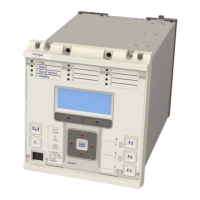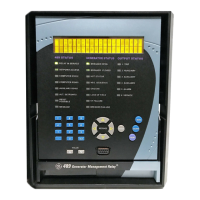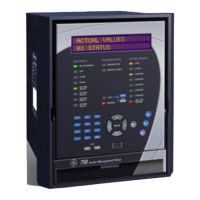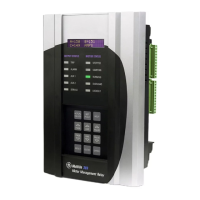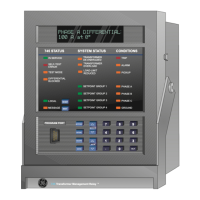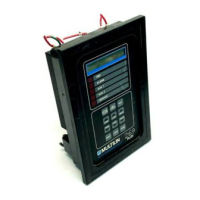10.1.3 ZONE 2 REACH CHECK
The zone 2 element is set to be directional forward.
1. Apply a dynamic B-C fault, slightly in excess of the expected reach. The duration of the injection should be
in excess of the tZ2 timer setting, but less than tZ3. These settings are in the DISTANCE column. No trip
should occur, and the red Trip LED should remain OFF.
2. Repeat the test described above to find the zone reach.
3. Record the impedance at which the device trips. The measured impedance should be within +/- 10% of the
expected reach.
4. Read and reset the alarms.
Modern injection test sets usually calculate the expected fault loop impedance from the device settings. For those
that do not, check the reach for phase-phase and confirm the operation of the appropriate contacts. The
appropriate loop impedance is now given by:
2 x Z2 Ω
10.1.4
ZONE 3 REACH CHECK
1. The zone 3 element is set to forward, reverse or offset. The current injected must be in the appropriate
direction to match the setting in the DISTANCE SETUP column.
2. Apply a dynamic C-A fault, slightly in excess of the expected reach. The duration of the injection should be
in excess of the tZ3 timer setting (typically tZ3 + 100 ms).
3. Repeat the test described above to find the zone reach.
4. Record the impedance at which the device trips. The measured impedance should be within +/- 10% of the
expected reach.
5. Read and reset the alarms.
6. Check that the correct reverse offset (Z3’) has been applied. The setting is in the Z3’ Ph Rev Reach and Z3’
Gnd Rev Reach cells.
10.1.5
ZONE 4 REACH CHECK
The zone 4 element is set to be directional reverse.
1. Apply a dynamic B-N fault, slightly in excess of the expected reach. The duration of the injection should be
in excess of the tZ4 timer setting (typically tZ4 + 100 ms).
2. Repeat the test described above to find the zone reach.
3. Record the impedance at which the device trips. The measured impedance should be within +/- 10% of the
expected reach.
4. Read and reset the alarms.
10.1.6
ZONE P REACH CHECK
The zone P element can be set to forward or reverse directional or offset. The current injected must be in the
correct direction to match the setting in the DISTANCE SETUP column.
1. Apply a dynamic C-N fault, slightly in excess of the expected reach. The duration of the injection should be
in excess of the tZP timer setting (typically tZP + 100 ms).
2. Repeat the test described above to find the zone reach.
3. Record the impedance at which the relay trips. The measured impedance should be within +/-10% of the
expected reach.
4. Read and reset the alarms.
Chapter 24 - Commissioning Instructions P446SV
636 P446SV-TM-EN-1
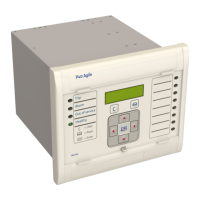
